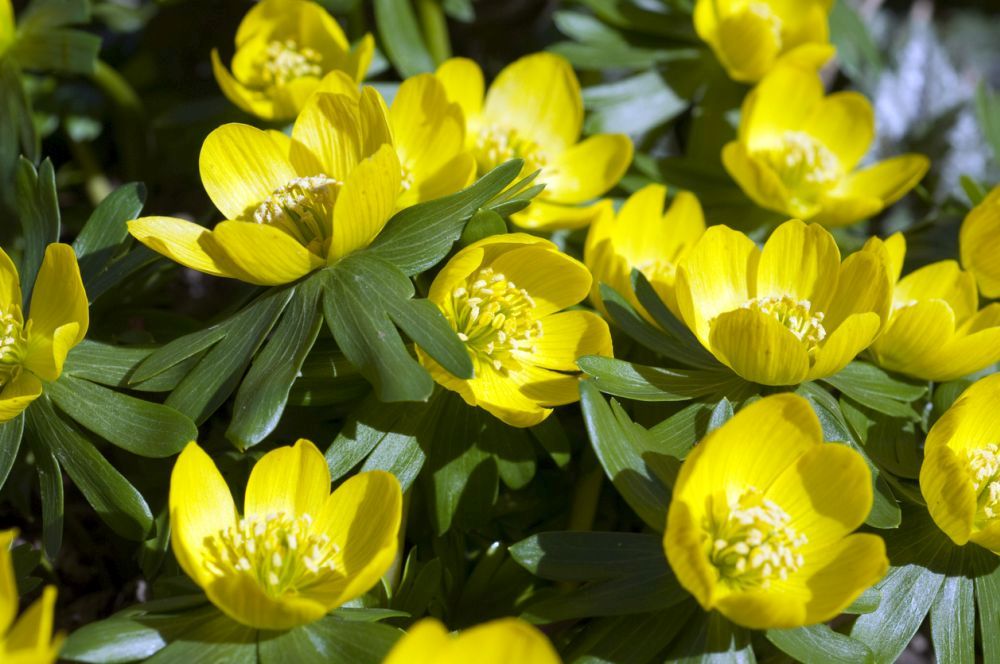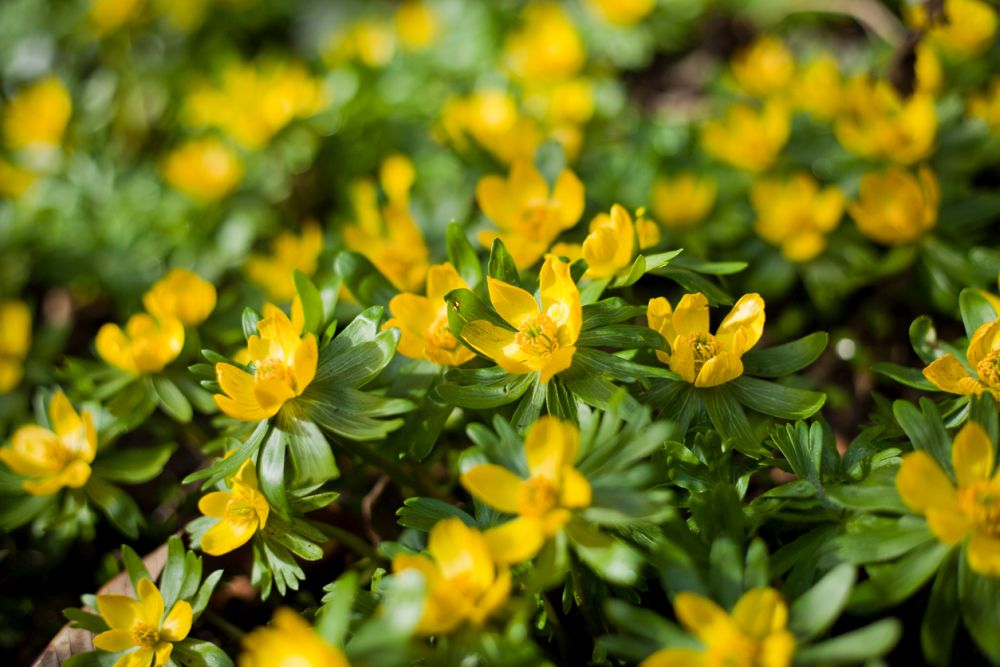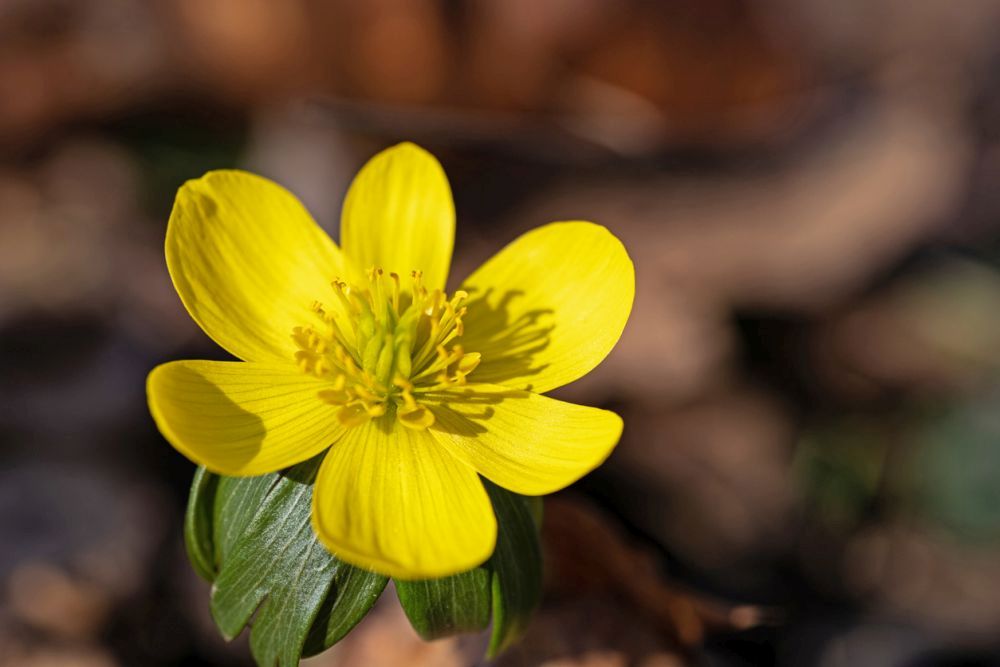Winter Aconite Plants – How To Grow And Care For Winter Aconite
Winter aconite is one of those often ignored bulbs with short stature. Despite the bright yellow flowers, the blooms are just too small for anyone to notice among a sea of daisies and tulips swaying in the garden. But just because it’s tiny, that doesn’t mean you should overlook this powerful plant. Greek history is full of intrigue and plots where the winter aconite played a major role.
Even in China, this flower still has a respected place in traditional medicine where its powerful toxins can be diluted and mixed with other ingredients to treat everything from the flu to pneumonia and asthma. But growing in your garden, the potent winter aconite has an innocent demeanor, and you can grow them along borders and sidewalks to improve your yard decor.
With their toxicity in mind, here’s everything you need to know about winter aconite plants and how to grow them and care for them in your garden.
All about Winter Aconite
Winter aconite (Eranthis hyemalis) is a member of the Ranunculaceae family. It is one of those dwarfish plants that have a deceptive appearance. Although the plant doesn’t grow more than 6 inches above the ground, it’s a perennial that can handle the harsh winters of zones 3 all the way to 7.
This low profile makes it ideal as a floor cover plant that spreads out and carpets the garden with its dark green and tiny leaves. This green magic starts to appear in mid-February. A late winter grower, first the green bracts of the flowers emerge, forming a tiny circle. When you take a closer look at them, you’ll notice how deeply loved they are. They also have deep white veins intersecting the green surface.
Once the bract reaches about 6 inches tall and 4 inches wide, it’s time for the flowers to emerge. That’s the showstopper right there. A small yellow cup of 6 petals brightens the garden at a time when all other plants are dormant. The petals are less than one inch in length, and in some varieties, you could have up to 8 petals in a single flower.
The wonderful show lasts for a couple of weeks or longer, depending on the weather. They usually open up when the sun is out, and the weather is warm and close under an overcast sky. After the flowers fade and are replaced by tiny pods of seeds, only then would the leaves emerge. When summer finally arrives, the leaves wither and fall, and the winter aconite goes dormant until next February.
Aconite Varieties
As a large family, aconites come in different shapes and sizes. One of them is winter aconite which is the topic of this article. But there are more formidable members of the family that make a more durable impression than the fleeting and diminutive winter aconite. Here are some of those varieties.
- Yellow Monkshood (Aconitum anthora): A native of Central Europe, this species prefers the cold mountains to the warm valleys of Europe. It was believed to be the antidote to the toxic winter aconite, which explains its name. The plant has small yellow flowers that look like butterflies.
- Carmichael’s Monkshood (Aconitum carmichaelii): Found mostly in East Asia, this species is 5 feet high and fully erect. The purple flowers bloom in the summer and early fall. It’s one of the many toxic species of the aconite family where even the roots are lethal to humans and livestock.
- Western Monkshood (Aconitum columbianum): A native of North America, this species loves moist soil where it grows mainly in coniferous forests and alongside river banks. The deep purple flowers have intricate petals that fold around each other. This species is not poisonous and bears fruit, although the fruits are not edible.
- Fischer Monkshood: Since it thrives in cold temperatures, this species spreads across Siberia and the Korean peninsula. Best known for its bright purple flowers, it is often grown in gardens for its ornamental values. The plant however, is toxic and has many uses in Chinese medicine.
How to Grow Winter Aconite
Most often, caring for plants is the tricky part. But in the case of winter aconite, both starting the plants from seeds and caring for them are difficult tasks. That’s because the plant has special requirements and demands a lot of patience from the gardener. Although starting winter aconite from seeds takes a long time to germinate, it’s by far the best way to grow these garden carpets. Here’s how to start winter aconite from seeds in easy steps.
- Purchase some winter aconite seeds from a reputable source online. You’ll rarely find these finicky plants growing in your local nursery due to their fleeting nature.
- Give the seeds the water test. Soak them in a jar full of water and skim off the bad seeds that don’t sink. Keep the good seeds soaked overnight while you prepare the soil.
- The best time to start winter aconite is in the fall before the first frost and when the soil hasn’t started freezing.
- Choose a spot in your garden that gets plenty of sunlight during February and March of every year. The flowers will only open up when the sun is out.
- Break the top 5 inches of the soil with a spade or a rake and work in some organic compost or aged manure. Use about one inch of compost and mix it well with the soil.
- Leave the raked soil in the sun for one day before you plant the seeds.
- Take the seeds out of the water and spread them on a towel. You’ll notice that the outer shell has softened.
- Divide the seeds into two equal piles. Take the first pile and spread it with your hand as you walk backward in a direction from east to west.
- Spread the other half of the seeds, also walking backward from north to south. This ensures the even spreading of the seeds and prevents bald patches.
- Cover the seeds with a half-inch of soil and water them to get the soil moist but not wet.
- Leave the seeds in the soil all autumn and the best part of the winter.
- Do not disturb that area by walking over it or mowing or raking it.
- Keep the soil moist in warm weather. When it goes dry, water it lightly.
- In mid-February, the seeds will germinate, and the tips of the green bracts will emerge.
Winter Aconite Care
Now that the first part of the process is completed successfully, you should have a carpet of green and yellow colors covering your garden. You shouldn’t have any trouble with the seeds since the germination rate of winter aconite is remarkably high. But now comes the hard work of keeping those small plants happy.
Soil
We already mentioned that winter aconite was not like many other plants. And the type of soil it prefers is just another peculiarity of this perennial. Although it can grow in just about any soil you throw the seeds in, it seems to thrive in particularly alkaline soil. The soil also needs to be constantly moist but well-drained. That rules out clay or predominantly silt soil types. Add as much organic material to the soil as you can since it favors rich soil. However, avoid adding materials that increase the acidity of the soil, such as rotten leaves. Instead, increase the hummus concentrations in the soil to bring it up to the levels this aconite is used to.
Light
Sunlight is crucial for the success of winter aconite. The bright yellow flowers will not open up unless they’re kissed by the sun. If a cloud passes in front of the sun and stays for a while, the shy flowers will close down. So you should make sure that whatever spot you choose for these perennials gets plenty of sunlight in February and March of every year. Although you can still grow the aconite in dappled light or partial shade, the yellow and green spectacle it will create on your garden floor will not be the same as when it gets the full late winter sun.
Water
Moist soil is the secret to the continuous success of perennial winter aconite. It needs enough water to keep the soil moist but not wet. So when watering it, don’t pour the 2 inches of water a week in one go. Instead, you should pace and divide it into three irrigations a week depending on how hot and dry the weather is in your zone. If there’s rainfall or the soil doesn’t dry out fast, you can cut back the water rations to about one inch a week. But if it requires more water, you can bring it up to 3 inches.
Fertilizer
The first dumping of organic compost and aged manure that you do before seeding winter aconite is usually enough to support the plant’s short flourish. As a small plant, it doesn’t need more nutrients than what’s already in the rich soil. That said, you still need to replenish these goodies every year in the late winter. Just before the plant comes out of its dormancy, add some organic material to the soil before you water it.
Winter Aconite Toxicity
Winter aconite is famous for its high toxicity. Even though it’s used in traditional medicine, it is said that if the measurements of cardiac glycosides, the active ingredient in the plant, go slightly wrong, the medical concoction could cause serious damage to the heart of the patient. This should give you an idea of what kind of plant you’re dealing with. You should protect the area where you plant winter aconite from access for children and pets alike. If ingested, it causes a wide variety of symptoms that range from stomachaches to nausea, vomiting, and blurred vision. When consumed in large quantities, it could cause a heart attack. In cases of winter aconite poisoning, you should seek immediate medical help. And don’t under any circumstances use the blooms to make floral arrangements or keep them within reach of children.


